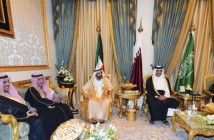Eurasia Review
By RSIS
Religiously-diverse societies are not necessarily fraught with conflict and violence as religious plurality can be compatible with social peace. Although the state has a big role as the custodian of inter-religious harmony, the people themselves should assume the social responsibility to preserve and strengthen it.
By Mohd Alami Musa
PEW RESEARCH Centre’s latest study found that Singapore is the most religiously-diverse country in the world. It topped the list of 232 countries involved in the study. The study looks at the percentage of each country’s population that belongs to eight major religious groups.
The closer a country comes to having equal shares of the eight groups the higher will be its religious diversity index. The eight groups or religions are Buddhism, Christianity, Hinduism, Islam, Judaism, folk religions, “other religions” and the religiously unaffiliated.
Religious diversity and conflict management
Following the report, an article appeared on 4 April 2014 in The Atlantic (www.theatlantic.com) that made a co-relation between religious diversity and religious hostility. It concluded that spiritual consensus that characterises homogeneous societies is not the key to peace. The countries that have high levels of religious violence are primarily countries dominated by a single faith. It may not be true everywhere but the corelation done suggests that religious plurality is compatible with peaceful societies.
Singapore is one such country that validates this outcome. Its very high religious diversity does not give rise to conflict. Observers, especially critical ones, cited the dominant role of the state as the most significant reason for the diverse religious groups to keep the social peace. Is this true? Is the religious harmony that Singapore enjoys today sustainable as the country enters the era of the “new normal” where central authority assumes a lesser role in the lives of people, a trend that one sees as part of the post-modern world?
Sustaining inter-religious harmony
Singapore has generally enjoyed healthy inter-religious relations in the last five decades since its independence. This, however, did not mean that there were no inter-religious tensions. There had been cases of over-zealous missionary activities, aggressive proselytisation, the rise of fundamentalist as well as extremist groups that had corruptly used religion as a political tool, episodes of insensitive preaching and postings over social media which affected inter-religious relations.
The state responded decisively to these situations by invoking its power under the relevant Acts. The legal framework was further strengthened through the enactment of the Maintenance of Religious Harmony Act to keep religion out of politics and to deal with individuals who disrupt religious harmony through radical or extremist means. The government has no apologies to adopt a very tough stand as it sees the survival of Singapore to be closely inter-twined with social peace.
Nevertheless, the approach evolved over time as there was realisation that religiously-inspired ideas and actions could not be hemmed in by tough laws as well as coercive rhetoric. Furthermore, genuine inter-religious understanding cannot be engendered by top-down approaches. Therefore, there was a conscious effort to get the involvement of religious communities to build confidence in each other following September 11 through the Inter-Religious Confidence Circles (IRCC) project and the introduction of the Declaration of Religious Harmony which relied on moral suasion to get religious leaders to exercise moderation and sensitivity in dealing with the “religious other”.
The latest initiative in the form of the Community Engagement Programme is designed as a grassroots and civic society project to build adequate social capital and social resilience.
All these top-down initiatives have borne fruit. The social fabric remains strong although the real test will come in the face of a major crisis like a terrorist attack. Therefore, interventions by the state continue to be needed as it has proven to be an effective custodian of inter-religious peace. However, moving forward, inter-religious harmony will only be sustainable over time if people take ownership to jealously guard it from being disrupted.
Not just for the religious elite
Rudyard Kipling’s famous line “East is east and West is west and never the twain shall meet” might be true in the nineteenth century but not today. Today, north and south have joined east and west in an inter-connected, globalised world characterised by unprecedented religious diversity.
Few in Singapore could have imagined, five decades ago, that it would be the most religiously diverse society today. With its location at the crossroads between east and west as well as its openness to the outside world, it has become home to a very wide spectrum of religious beliefs, orientations and practices. The question is whether Singaporeans have the necessary outlook and required skills to positively manage this unprecedented level of religious diversity so that inter-religious harmony remains sustainable.
Given the dearth of comparative religious studies, the near absence of inter-religious training and the marginality of inter-religious content in the educational syllabus, Singaporeans may not have adequate capacity to connect with the religious other. Consequently, they may, at best, just politely tolerate, while in practice they may ignore and at worst abhor the religious other. Such attitude towards the religious other is not desirable.
Two factors will decide on the state of inter-religious relations. One is the breadth and depth of inter-faith engagements. The other is the extent and quality of inter-religious dialogue that exists in society. Singapore has done well for the first factor but it can do a lot more for the second factor. The long term sustainability of inter-religious harmony is determined by the extent to which Singaporeans treat their religious other with respect and understanding. For this purpose, the culture of dialogue can make society gracious and respectful in managing religious diversity.
Inter-religious dialogue is not exclusively for the religious elite. Dialogue in its simple form promotes ordinary folks to engage in a conversation to know about other religions. They can better understand other religions by identifying the common characteristics that bind all religions together and appreciate the differences. It involves learning about the religious other, not to be like the other, but learning that will further enrich their own spirituality and strengthen their beliefs by re-discovering their own religious traditions.
The great pioneer of the modern discipline of the history of religion Friedrich Max Muller famously wrote that “he who knows one religion knows none”. This may sound extreme but the relevant message is that by being dialogical, one will better appreciate the religious other and other religions, thus anchoring inter-religious harmony in Singapore to knowledge and therefore making it sustainable over time.
Mohammad Alami Musa is Head of Studies in the Inter-Religious Relations in Plural Societies Programme (SRP), S. Rajaratnam School of International Studies (RSIS), Nanyang Technological University. A version of this article appeared in The Straits Times on 4 May 2014.






